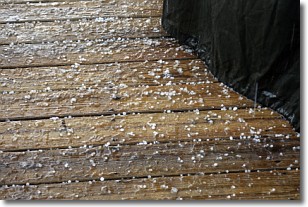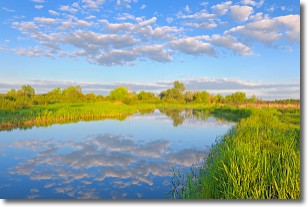Weather Alert in Oregon
Red Flag Warning issued September 5 at 1:38PM MDT until September 5 at 10:00PM MDT by NWS Boise ID
AREAS AFFECTED: Steens Mountain; Southern Grasslands
DESCRIPTION: ...RED FLAG WARNING FOR SOUTHEAST OREGON DUE TO ABUNDANT LIGHTNING AND GUSTY THUNDERSTORM OUTFLOWS THIS AFTERNOON AND EVENING... .Scattered thunderstorms capable of producing abundant lightning are forecast Friday afternoon and evening over southeastern Oregon. Gusty outflows to 50 mph may continue well into the evening and travel a large distance away from thunderstorms. The National Weather Service in Boise has issued a Red Flag Warning for lightning, which is in effect until 9 PM PDT this evening. * AFFECTED AREA...In Oregon, Fire Weather Zones 671 Steens Mountain and 672 Southern Grasslands. * TIMING...Until 9 PM PDT this evening. * THUNDERSTORMS...Scattered coverage with abundant lightning. * OUTFLOW WINDS...Gusty erratic winds up to 50 MPH. * IMPACTS...Any fire that develops will catch and spread quickly. Outdoor burning is not recommended.
INSTRUCTION: A Red Flag Warning means that critical fire weather conditions are either occurring now, or will occur shortly.
Want more detail? Get the Complete 7 Day and Night Detailed Forecast!
Current U.S. National Radar--Current
The Current National Weather Radar is shown below with a UTC Time (subtract 5 hours from UTC to get Eastern Time).

National Weather Forecast--Current
The Current National Weather Forecast and National Weather Map are shown below.

National Weather Forecast for Tomorrow
Tomorrow National Weather Forecast and Tomorrow National Weather Map are show below.

North America Water Vapor (Moisture)
This map shows recent moisture content over North America. Bright and colored areas show high moisture (ie, clouds); brown indicates very little moisture present; black indicates no moisture.

Weather Topic: What is Sleet?
Home - Education - Precipitation - Sleet
 Next Topic: Snow
Next Topic: Snow
Sleet is a form of precipitation in which small ice pellets are the primary
components. These ice pellets are smaller and more translucent than hailstones,
and harder than graupel. Sleet is caused by specific atmospheric conditions and
therefore typically doesn't last for extended periods of time.
The condition which leads to sleet formation requires a warmer body of air to be
wedged in between two sub-freezing bodies of air. When snow falls through a warmer
layer of air it melts, and as it falls through the next sub-freezing body of air
it freezes again, forming ice pellets known as sleet. In some cases, water
droplets don't have time to freeze before reaching the surface and the result is
freezing rain.
Next Topic: Snow
Weather Topic: What are Stratocumulus Clouds?
Home - Education - Cloud Types - Stratocumulus Clouds
 Next Topic: Stratus Clouds
Next Topic: Stratus Clouds
Stratocumulus clouds are similar to altocumulus clouds in their
fluffy appearance, but have a slightly darker shade due to their additional mass.
A good way to distinguish the two cloud types is to hold your hand out and measure
the size of an individual cloud; if it is the size of your thumb it is generally
an altocumulus cloud, if it is the size of your hand it is generally a
stratocumulus cloud.
It is uncommon for stratocumulus clouds to produce precipitation, but if they do
it is usually a light rain or snow.
Next Topic: Stratus Clouds
Current conditions powered by WeatherAPI.com




